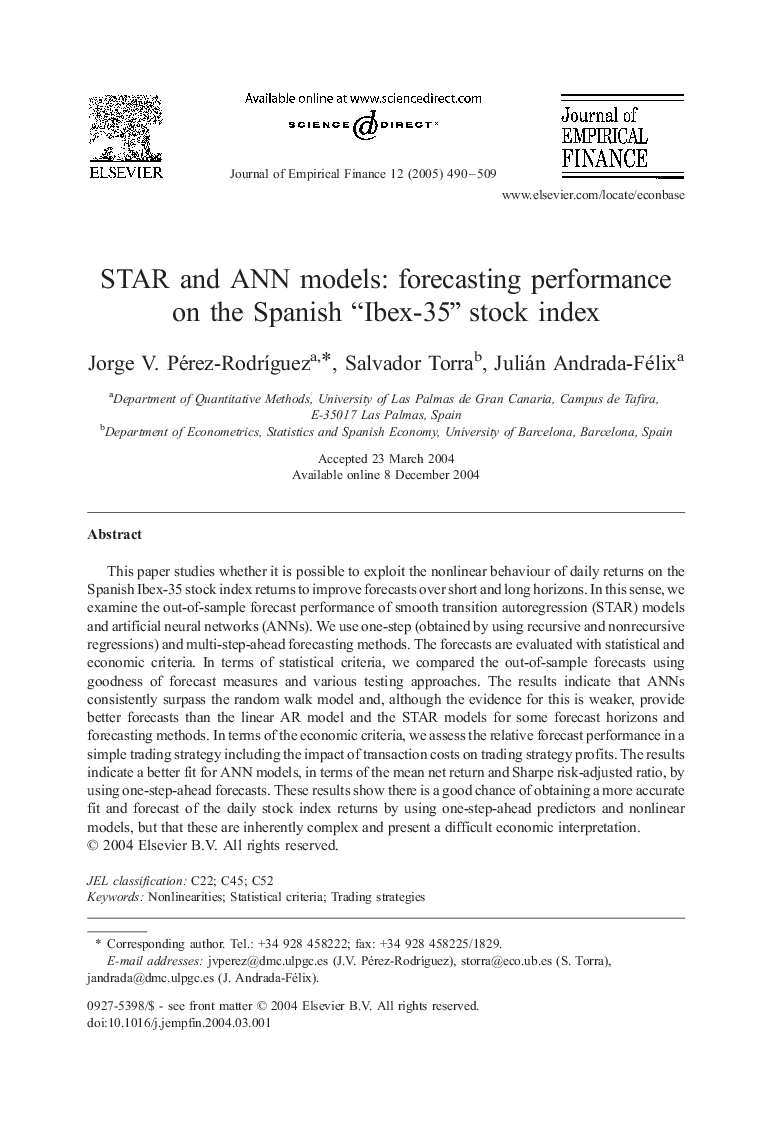| Article ID | Journal | Published Year | Pages | File Type |
|---|---|---|---|---|
| 10475170 | Journal of Empirical Finance | 2005 | 20 Pages |
Abstract
This paper studies whether it is possible to exploit the nonlinear behaviour of daily returns on the Spanish Ibex-35 stock index returns to improve forecasts over short and long horizons. In this sense, we examine the out-of-sample forecast performance of smooth transition autoregression (STAR) models and artificial neural networks (ANNs). We use one-step (obtained by using recursive and nonrecursive regressions) and multi-step-ahead forecasting methods. The forecasts are evaluated with statistical and economic criteria. In terms of statistical criteria, we compared the out-of-sample forecasts using goodness of forecast measures and various testing approaches. The results indicate that ANNs consistently surpass the random walk model and, although the evidence for this is weaker, provide better forecasts than the linear AR model and the STAR models for some forecast horizons and forecasting methods. In terms of the economic criteria, we assess the relative forecast performance in a simple trading strategy including the impact of transaction costs on trading strategy profits. The results indicate a better fit for ANN models, in terms of the mean net return and Sharpe risk-adjusted ratio, by using one-step-ahead forecasts. These results show there is a good chance of obtaining a more accurate fit and forecast of the daily stock index returns by using one-step-ahead predictors and nonlinear models, but that these are inherently complex and present a difficult economic interpretation.
Related Topics
Social Sciences and Humanities
Economics, Econometrics and Finance
Economics and Econometrics
Authors
Jorge V. Pérez-RodrÃguez, Salvador Torra, Julián Andrada-Félix,
